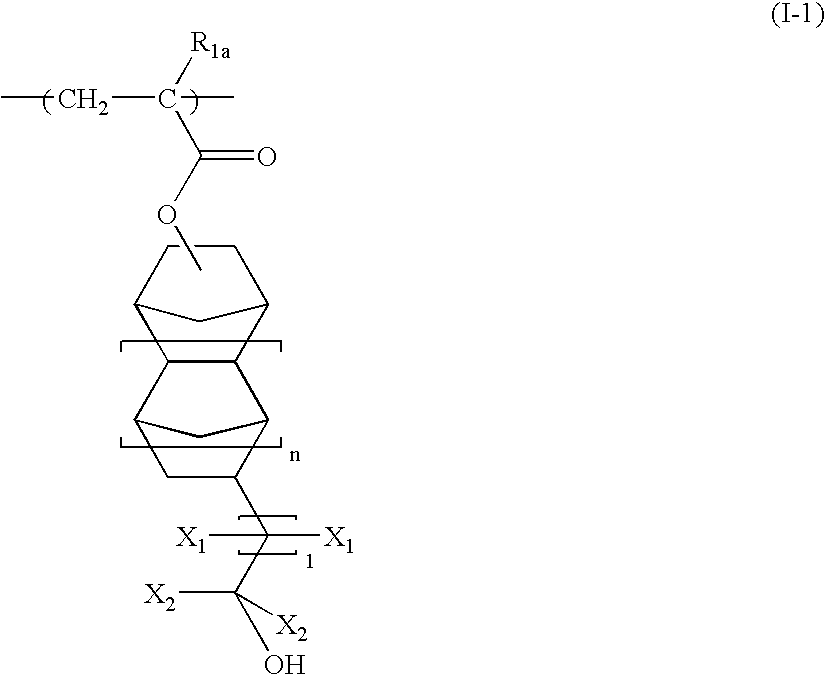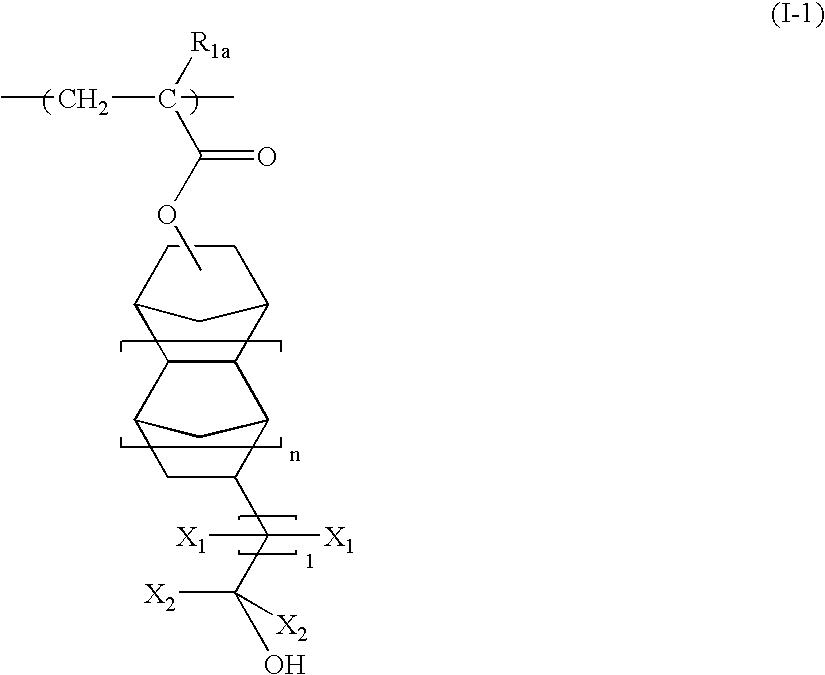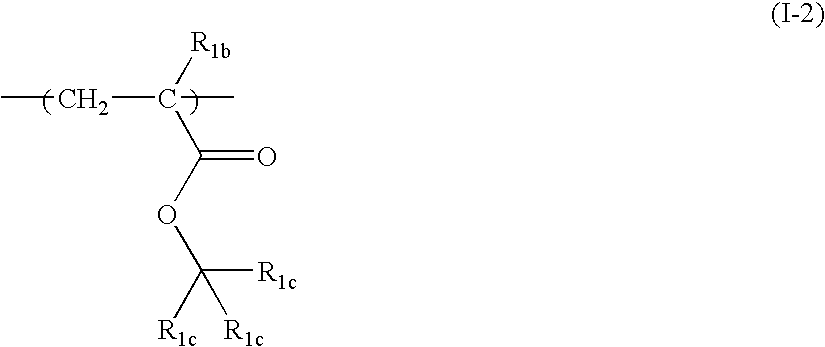Radiation-sensitive resin composition
- Summary
- Abstract
- Description
- Claims
- Application Information
AI Technical Summary
Benefits of technology
Problems solved by technology
Method used
Image
Examples
synthesis example 1
[0194] A monomer solution, prepared by dissolving 18.40 g (30 mol %) of 1-methylcyclopentyl acrylate with a structure shown by the following formula (S-2) and 55.09 g (40 mol %) of a compound of the following formula (S-3) in 73.48 g of 2-butanone, and further adding 7.32 g of dimethylazobisisobutyrate, was placed in a dropping funnel. 26.52 g (30 mol %) of the following compound (SI) and 26.52 g of 2-butanone were placed in a 500 ml three-neck flask. The mixture was purged with nitrogen for 30 minutes. After nitrogen purge, the monomer solution was added dropwise over two hours while controlling the temperature of the reaction solution at 80° C. with stirring, followed by polymerization reaction for three further hours. After the polymerization, the polymer solution was cooled with water to 30° C. or less. The cooled polymer solution was placed in a 1,000 ml separating funnel. After the addition of 200 g of ethyl acetate, 150 g of methanol, and 200 g of water, the mixture was stirr...
synthesis example 2
[0196] A monomer solution, prepared by dissolving 28.38 g (30 mol %) of 2-methyladamantan-2-yl acrylate and 59.48 g (40 mol %) of the above compound (S-3) in 87.87 g of 2-butanone, and further adding 7.91 g of dimethylazobisisobutyrate, was placed in a dropping funnel. 112.13 g (30 mol %) of bicyclo[2.2.1]hept-2-ene (S-4) with the following formula and 12.13 g of 2-butanone were placed in a 500 ml three-neck flask. The mixture was purged with nitrogen for 30 minutes. After nitrogen purge, the monomer solution was added dropwise over two hours while controlling the temperature of the reaction solution at 80° C. with stirring, followed by polymerization reaction for three further hours. After the polymerization, the polymer solution was cooled with water to 30° C. or less, diluted with 200 g of 2-butanone, and poured into 2,000 g of methanol to obtain white precipitate. After filtration, the obtained white powder in the form of slurry was washed twice with 400 g of methanol. The white...
synthesis example 3
[0198] A monomer solution, prepared by dissolving 12.54 g (20 mol %) of the above compound (S-2), 42.25 g (30 mol %) of the above compound (S-3), and 18.08 g (20 mol %) of 3-hydroxyadamantan-1-yl acrylate (S-6) in 72.88 g of 2-butanone, and further adding 7.49 g of dimethylazobisisobutyrate, was placed in a dropping funnel. 27.12 g (30 mol %) of the above compound (S-1) and 27.12 g of 2-butanone were placed in a 500 ml three-neck flask. The mixture was purged with nitrogen for 30 minutes. After nitrogen purge, the monomer solution was added dropwise over two hours while controlling the temperature of the reaction solution at 80° C. with stirring, followed by heating for three further hours. After polymerization, the polymer solution was cooled with water to 30° C. or less. The cooled polymer solution was placed in a 1,000 ml separating funnel. After the addition of 200 g of ethyl acetate, 150 g of methanol, and 200 g of water, the mixture was stirred for five minutes and allowed to ...
PUM
 Login to View More
Login to View More Abstract
Description
Claims
Application Information
 Login to View More
Login to View More - R&D
- Intellectual Property
- Life Sciences
- Materials
- Tech Scout
- Unparalleled Data Quality
- Higher Quality Content
- 60% Fewer Hallucinations
Browse by: Latest US Patents, China's latest patents, Technical Efficacy Thesaurus, Application Domain, Technology Topic, Popular Technical Reports.
© 2025 PatSnap. All rights reserved.Legal|Privacy policy|Modern Slavery Act Transparency Statement|Sitemap|About US| Contact US: help@patsnap.com



